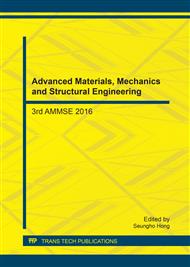p.305
p.311
p.317
p.323
p.328
p.334
p.345
p.355
p.361
Cause Analysis and Preventive Measures against Cracks in 15Cr1Mo1V Steel Welded Joint in Service
Abstract:
Characteristics and forming causes of the cracks in welded joint of 15Cr1Mo1V steel serviced 70000h are investigated by mechanical and chemical testing and crack morphology observation. Results show that the cracks initiate from welded metal or coarse grain heat affect zone (CGHAZ) near fusion line, and there are three kinds of defects observed in the crack region, which are macrocracks, microcracks and voids. According to the forming position, process and morphology of the cracks, it is estimated that the cracks are a kind of stress relief crack (SRC). The main reasons of the cracking are because of residual stress caused by improper temperature field during post welding heat treatment, strong stress concentration caused by welding structure, additional stress caused by abnormal hangers & supports and decreased ductility of welded joint in service. The SRC in welded joint can be avoided through optimizing the welding process and postweld heat treatment(PWHT) process to ensure enough critical ductility deformation ability εc and avoiding and reducing stress concentration and additional stress to decrease ductility deformation εP of welded joint which make εc>εp consistently.
Info:
Periodical:
Pages:
328-333
Citation:
Online since:
February 2017
Authors:
Keywords:
Price:
Сopyright:
© 2017 Trans Tech Publications Ltd. All Rights Reserved
Share:
Citation:


